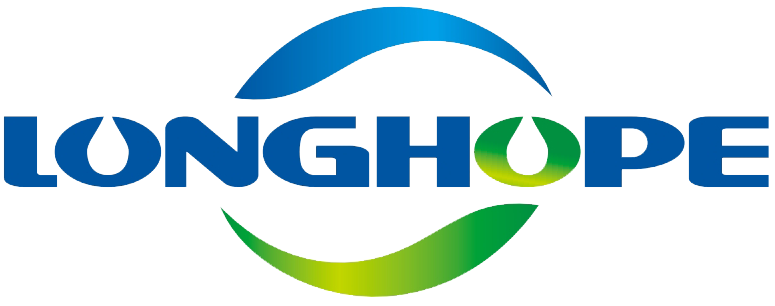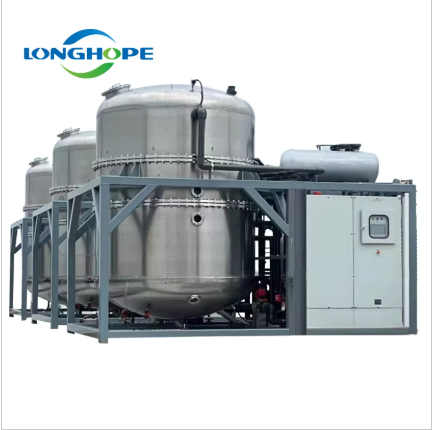Electroplating Industry: Heavy Metal Recovery Success Story
Problem: Hazardous Wastewater Contamination
Electroplating processes inherently generate hazardous wastewater laden with heavy metals like chromium, nickel, and cadmium. These contaminants pose not just substantial environmental threats but also significant health risks. Industries that fail to meet regulatory standards can face severe penalties, including hefty fines and potential operational shutdowns. This non-compliance not only disrupts business operations but also severely impacts profitability. In an industry like electroplating, where precision and quality are paramount, managing wastewater contamination is essential to maintain regulatory compliance and protect the environment.
Solution: Vacuum Evaporation for Metal Concentration
The adoption of vacuum evaporation technology in the electroplating sector has revolutionized heavy metal wastewater treatment. By effectively concentrating metals such as chromium and nickel, this technology enables efficient removal and recovery from wastewater. This solution not only significantly reduces the volume of hazardous waste produced but also ensures stringent adherence to environmental regulations. Vacuum evaporation thus presents a dual advantage: optimizing metal recovery while drastically minimizing ecological impact, aligning operational processes with regulatory compliance and sustainability goals in the industry.
Results: 95% Water Reuse & Compliance Achieved
The implementation of vacuum evaporation technology has allowed electroplating facilities to achieve remarkable results, including a 95% rate of water reuse. This significant reduction in freshwater intake not only aids in cost savings but also demonstrates a commitment to resource conservation and sustainability. Moreover, these facilities have achieved compliance with stringent environmental regulations, establishing a resilient and sustainable business model. This success story exemplifies how technology can drive both operational efficiencies and regulatory adherence, making it a compelling case study for the industry's eco-friendly evolution.
This approach serves as an exemplar in the "Case Studies: Successful Applications of Industrial Vacuum Evaporators", showcasing not only compliance but also sustainable water management practices in the electroplating industry.
Pharmaceutical Sector: Solvent Recycling Case Study
Challenge: High-Cost Disposal of Toxic Byproducts
Pharmaceutical manufacturing is grappling with the high-cost disposal of toxic solvents, which has become a significant financial burden. These toxic byproducts not only strain a company's finances but also pose substantial environmental and public health risks, making inefficient disposal practices unsustainable. As regulatory bodies increase scrutiny, pharmaceutical companies face mounting pressure to find solutions that not only comply with environmental standards but also do so in a cost-effective manner.
Implementation: Low-Temperature Evaporation Systems
To address these challenges, pharmaceutical companies have been implementing low-temperature evaporation systems. These innovative systems recover valuable solvents while significantly reducing energy consumption, offering a dual benefit of cost savings and resource conservation. By operating under vacuum conditions, the systems lower the boiling points of solvents, ensuring a more efficient recovery process. This adoption not only highlights the commitment of the industry to sustainability but also showcases technological advancements in solvent recovery techniques.
Outcome: 80% Operational Cost Reduction
The integration of low-temperature evaporation systems has resulted in an impressive 80% reduction in operational costs associated with solvent disposal. This achievement underlines the financial viability of adopting advanced solvent recycling solutions. By enhancing solvent recovery processes, pharmaceutical companies have also bolstered their sustainability credentials, striking a balance between profitability and environmental responsibility. This case study stands as a testament to how strategic technological investment can drive both economic and ecological benefits in the pharmaceutical industry.
Overall, the success of solvent recycling in the pharmaceutical sector illustrates a pivotal step toward comprehensive sustainability practices, with significant reductions in waste disposal costs and environmental impact. The embracement of low-temperature evaporation systems not only sets a precedent for the industry but also underscores the critical role of innovative technologies in shaping a sustainable future.
Food Processing Plant: Zero Liquid Discharge Achievement
Issue: Organic Wastewater Stream Management
Food processing plants often grapple with managing large volumes of organic wastewater laden with nutrients. This wastewater poses significant challenges for treatment and disposal. Without effective management, these nutrient-rich streams can lead to environmental sanctions due to pollution and also result in the loss of valuable resources that could otherwise be recycled or reused. Such inefficiencies can negatively impact the sustainability efforts of a plant and its reputation in the industry.
Technology: Multi-Effect Vacuum Evaporators
Multi-effect vacuum evaporators offer a compelling solution to the problem of organic wastewater management. This technology excels in concentrating and recovering water from these wastewater streams, thus enhancing operational efficiency. By using vacuum conditions, the evaporators reduce energy consumption while simultaneously increasing recovery rates. This makes the process more sustainable and cost-effective, benefiting the food processing plants both economically and environmentally.
Impact: Full Water Recovery & Energy Savings
Implementing multi-effect vacuum evaporators has allowed the food processing plant to achieve full water recovery. This success translates into substantial reductions in freshwater sourcing costs, thereby supporting both economic and environmental goals. Moreover, the energy savings realized through this technology reduce carbon emissions, boosting the plant's eco-friendly reputation. The adoption of cutting-edge technologies for wastewater management showcases the plant's commitment to sustainability and innovation in industry practices.
Chemical Manufacturing: ESG-Driven Waste Minimization
Regulatory Pressure: Strict Emission Standards
Chemical manufacturers are increasingly challenged by strict emission standards designed to enhance environmental stewardship. These regulations demand companies to minimize emissions, reflecting a global shift towards sustainable industrial practices. Adherence not only helps avoid penalties but also fosters corporate responsibility. By meeting these standards, companies can strengthen their public image and promote an eco-friendly brand, aligning with growing market expectations.
Strategy: Closed-Loop Evaporation Process
To effectively minimize waste, chemical manufacturers can implement a closed-loop evaporation process. This innovative approach enables the maximization of chemical recovery during production cycles, significantly reducing waste generation. The system efficiently recycles materials back into the manufacturing process, enhancing resource efficiency and supporting environmental sustainability. By minimizing waste, companies reduce handling and disposal costs, aligning with both economic and environmental goals.
ESG Benefits: Carbon Footprint Reduction
Focusing on ESG initiatives brings substantial benefits, especially in reducing the carbon footprint of chemical manufacturing operations. These improvements aid in meeting regulatory requirements and demonstrate proactive environmental responsibility. Moreover, they appeal to the increasing number of socially conscious investors looking for sustainable investment opportunities. As companies emphasize environmental, social, and governance (ESG) practices, they not only comply with regulations but also attract attention and support from sustainability-focused sectors and financiers.
Metal Finishing Facility: Resource Circularity Model
Problem: Valuable Material Loss in Effluents
Metal finishing processes can often lead to the loss of valuable materials, like precious metals, in wastewater effluents. Addressing this significant issue is crucial for improving profitability and promoting resource circularity within the industry. By reclaiming these materials effectively, facilities can not only enhance their economic outcomes but also contribute to sustainability efforts by reducing waste.
Innovation: Vacuum Distillation Integration
Integrating vacuum distillation technology into metal finishing processes offers an innovative solution for recovering valuable materials. This advanced method enables the effective extraction of precious metals from wastewater streams, significantly increasing overall yield. By reducing dependency on external raw material sources, this approach not only optimizes resource use but also strengthens the facility's sustainability profile.
Value Created: Precious Metal Reclamation
The implementation of precious metal reclamation initiatives within the facility has led to noteworthy cost savings and a heightened waste-to-resource conversion rate. By adopting a circular resource model, the metal finishing industry exemplifies practical sustainability—transforming waste into valuable resources. This not only enhances financial performance but also underscores the potential for sustainable practices to drive industry-wide improvements.
Future Applications: Emerging Industrial Trends
Solar-Powered Evaporation Systems
Solar-powered evaporation systems are becoming a key trend in industrial waste management, offering sustainable solutions while significantly cutting operational costs. By leveraging renewable energy, these systems minimize the reliance on fossil fuels, ultimately curbing carbon emissions and addressing environmental concerns. Solar evaporation proves to be an efficient method, especially in regions with abundant sunlight, providing a cost-effective alternative to traditional fuel-based evaporation processes. This innovation aligns with the global push towards eco-friendly industrial practices and is being increasingly adopted across various sectors seeking to enhance sustainability.
AI-Optimized Wastewater Treatment
The integration of Artificial Intelligence (AI) into wastewater treatment processes stands out as a transformative trend in the field, providing unmatched efficiency and operational cost reductions. AI technology is capable of analyzing data in real-time to optimize treatment parameters, thus ensuring the most efficient resource use and superior performance. This capability not only aids in better resource management but also addresses the growing need for scalability in treatment facilities. As AI-enhanced systems continue to evolve, they promise to reshape wastewater management, offering precise and adaptive solutions for complex industrial challenges.
FAQ Section
What are the environmental threats of heavy metals in wastewater?
Heavy metals such as chromium, nickel, and cadmium pose substantial environmental threats, including contamination of water bodies, soil pollution, and ecosystem disruption, aside from health risks.
How does vacuum evaporation benefit the electroplating industry?
Vacuum evaporation technology helps concentrate and recover metals from wastewater, significantly reducing hazardous waste volume, ensuring compliance with environmental regulations, and advancing sustainability goals.
What is the concept of zero liquid discharge in food processing plants?
Zero liquid discharge (ZLD) refers to the complete elimination of liquid waste, achieved through technologies like multi-effect vacuum evaporators positioned to maximize water recovery and reduce resource expenditure.
Why are chemical manufacturers focusing on closed-loop processes?
Closed-loop processes help chemical manufacturers minimize waste by recycling materials back into production, thereby boosting resource efficiency and aligning with stringent emission standards.
How do AI technologies optimize wastewater treatment?
AI technologies analyze real-time data to optimize treatment parameters, enhancing resource efficiency and performance, thus revolutionizing wastewater management with adaptive, scalable solutions.
Table of Contents
- Electroplating Industry: Heavy Metal Recovery Success Story
- Pharmaceutical Sector: Solvent Recycling Case Study
- Food Processing Plant: Zero Liquid Discharge Achievement
- Chemical Manufacturing: ESG-Driven Waste Minimization
- Metal Finishing Facility: Resource Circularity Model
- Future Applications: Emerging Industrial Trends
-
FAQ Section
- What are the environmental threats of heavy metals in wastewater?
- How does vacuum evaporation benefit the electroplating industry?
- What is the concept of zero liquid discharge in food processing plants?
- Why are chemical manufacturers focusing on closed-loop processes?
- How do AI technologies optimize wastewater treatment?

